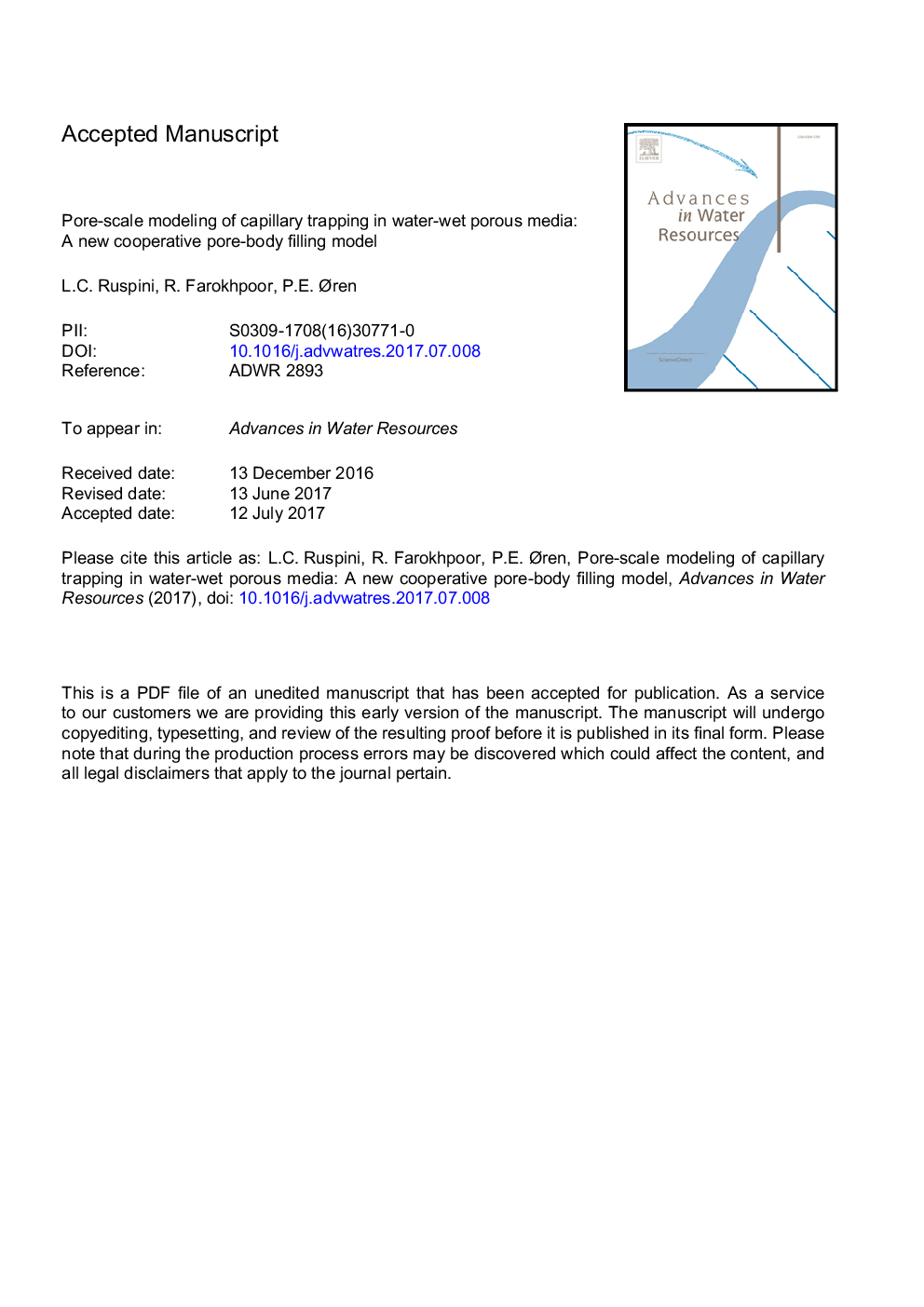| Article ID | Journal | Published Year | Pages | File Type |
|---|---|---|---|---|
| 5763874 | Advances in Water Resources | 2017 | 45 Pages |
Abstract
We present a pore-network model study of capillary trapping in water-wet porous media. The amount and distribution of trapped non-wetting phase is determined by the competition between two trapping mechanisms - snap-off and cooperative pore-body filling. We develop a new model to describe the pore-body filling mechanism in geologically realistic pore-networks. The model accounts for the geometrical characteristics of the pore, the spatial location of the connecting throats and the local fluid topology at the time of the displacement. We validate the model by comparing computed capillary trapping curves with published data for four different water-wet rocks. Computations are performed on pore-networks extracted from micro-CT images and process-based reconstructions of the actual rocks used in the experiments. Compared with commonly used stochastic models, the new model describes more accurately the experimental measurements, especially for well connected porous systems where trapping is controlled by subtleties of the pore structure. The new model successfully predicts relative permeabilities and residual saturation for Bentheimer sandstone using in-situ measured contact angles as input to the simulations. The simulated trapped cluster size distributions are compared with predictions from percolation theory.
Related Topics
Physical Sciences and Engineering
Earth and Planetary Sciences
Earth-Surface Processes
Authors
L.C. Ruspini, R. Farokhpoor, P.E. Ãren,
